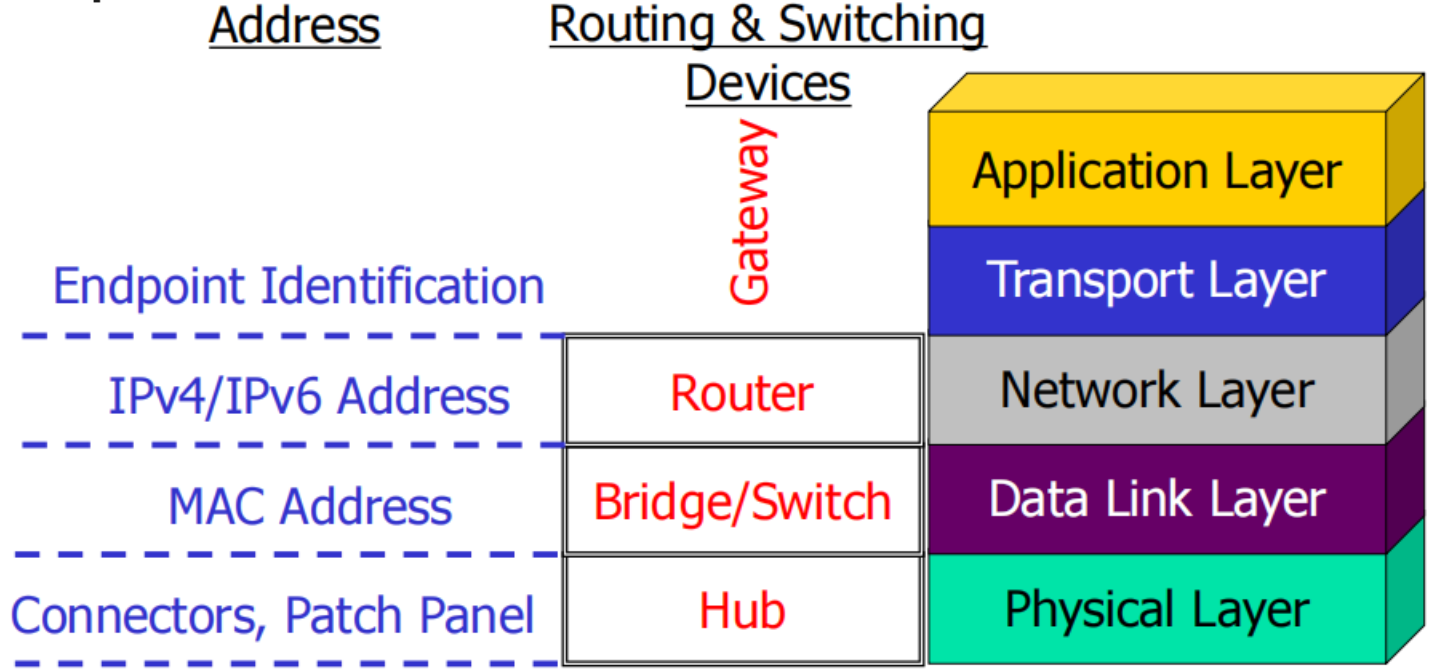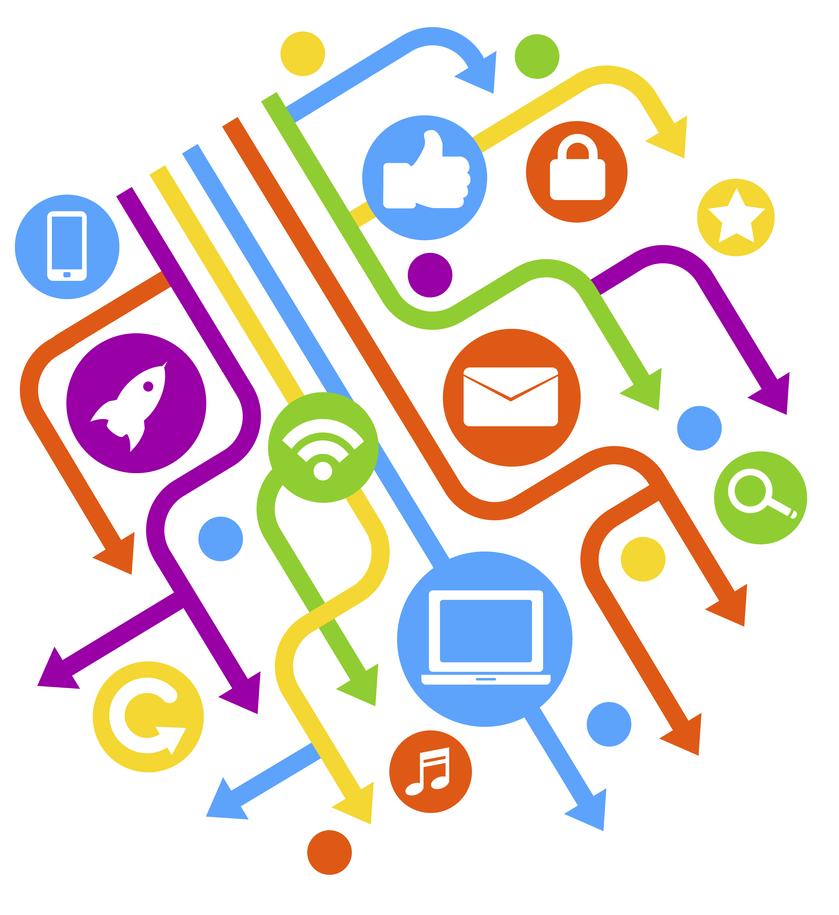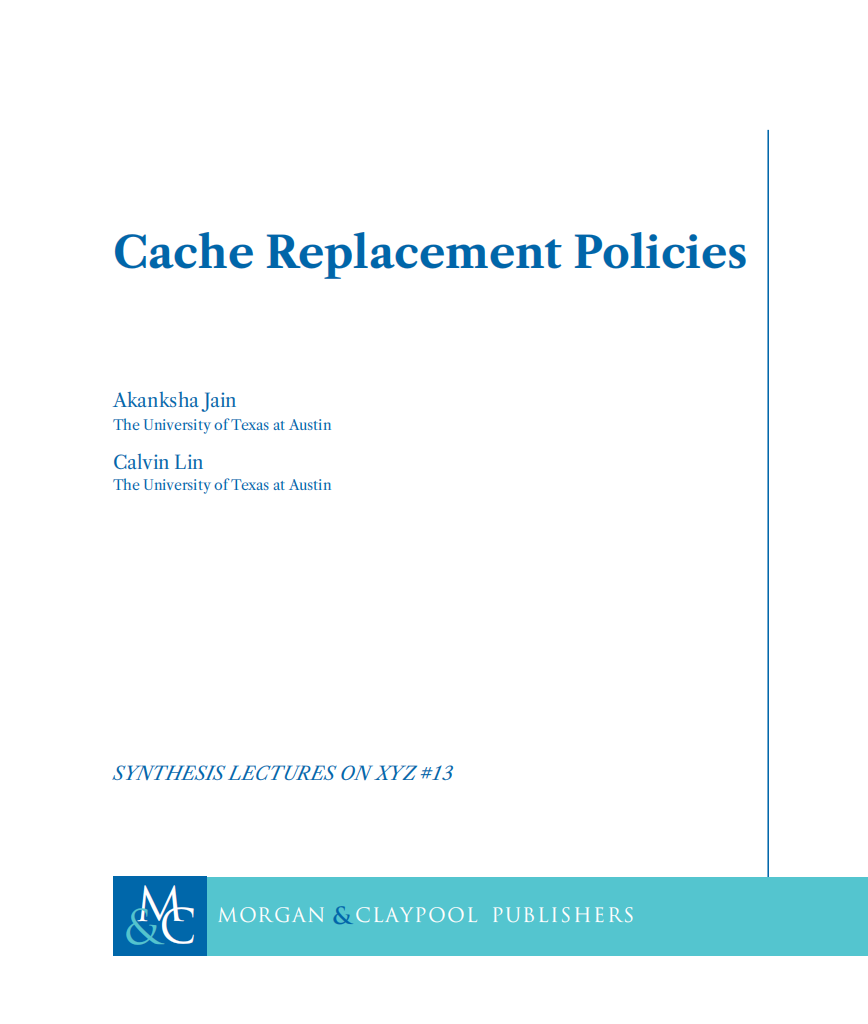互联网应用笔记(一)
Internet Applications
Introduction
What is the Internet?
Internet vs. internet
internet: a set of computer networks that are connected to each other.
泛指多个计算机网络互连而组成的网络
Internet: a worldwide sets of networks that interoperate using TCP/IP protocols.
指当前世界上最大的、开放的、由众多网络相互连接而成的特定计算机网络
Internet vs. WWW
WWW万维网:An information sharing model on top of the Internet
一个由许多互相链接的超文本组成的系统,通过互联网访问。
Internet :a networking infrastructure and the related communication standards
How does the Internet work?
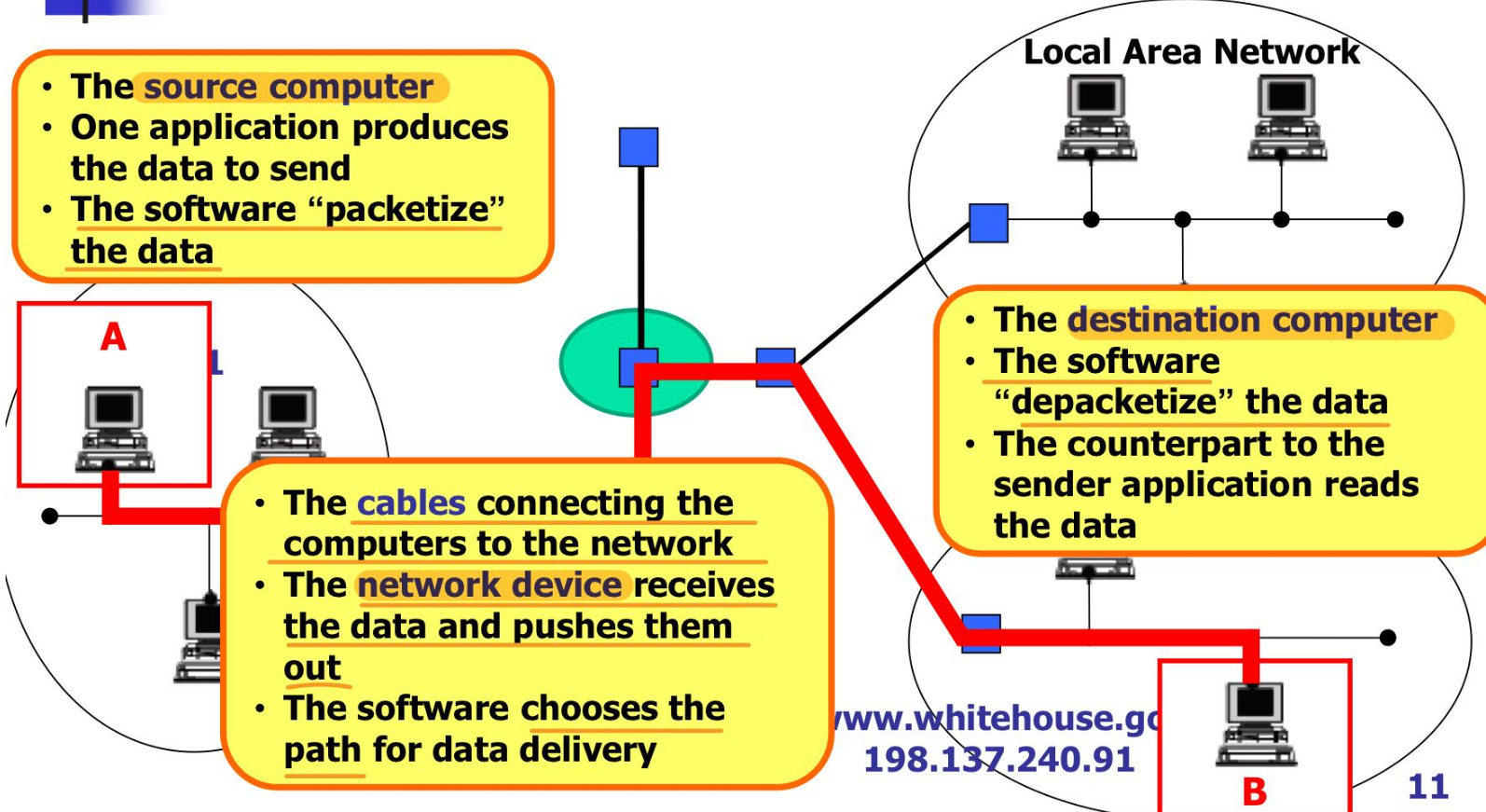
Components of the Internet
沙漏型
Internet applications
◼ telnet, ftp, Email, Web browser
Internet protocols
◼ TCP/IP, FTP, SMTP,HTTP
Internet addresses
◼ IPv4, IPv6, Domain Name System
Physical infrastructure
◼ hosts, routers, wiring
Internet addressing
IP Address:network interface address
Be assigned by IANA
Hostname:Be assigned to a host for the benefit of humans
Internet protocols
Protocol = A set of rules for communicating
Internet Protocol (IP)
◼ Basic data transport: the glue of the Internet
◼ Unreliable delivery
◼ Versions
◼ IPv4 with 32 bit/4 Byte address
◼ IPv6 with 128 bit/16 Byte address
Transport layer
Transmission Control Protocol (TCP)
◼ Reliable data transmission ◼ Connection-oriented
User Datagram Protocol (UDP)
◼ Unreliable data transmission
◼ Connectionless-oriented
All Internet Applications use at least IP, most use TCP/UDP and IP
Application protocols
File Transfer Protocol (FTP)
◼ Used by file exchange applications
Simple Mail Transfer Protocol (SMTP)
◼ Used by email applications
HyperText Transfer Protocol (HTTP)
◼ Used by WWW applications
Internet applications
ftp, telnet, email, www(www是所有超文本网页文件的集合)
大多基于CS架构
application对应的protocol:
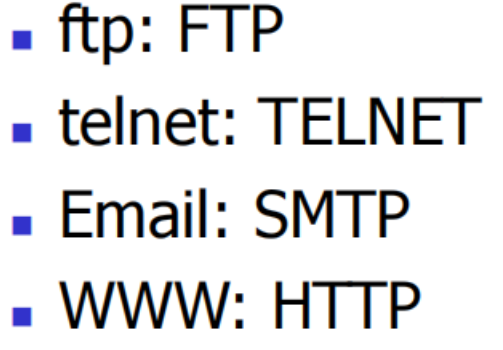
Layered networking model
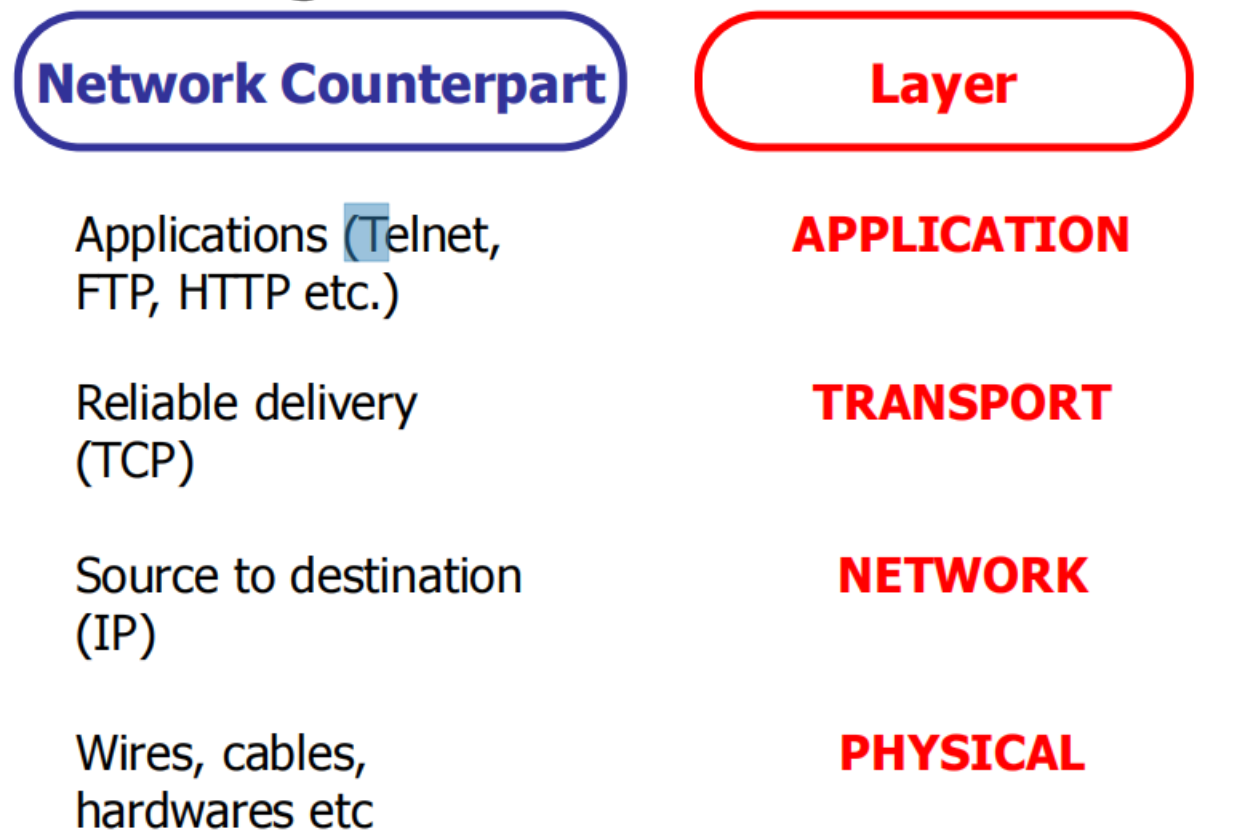
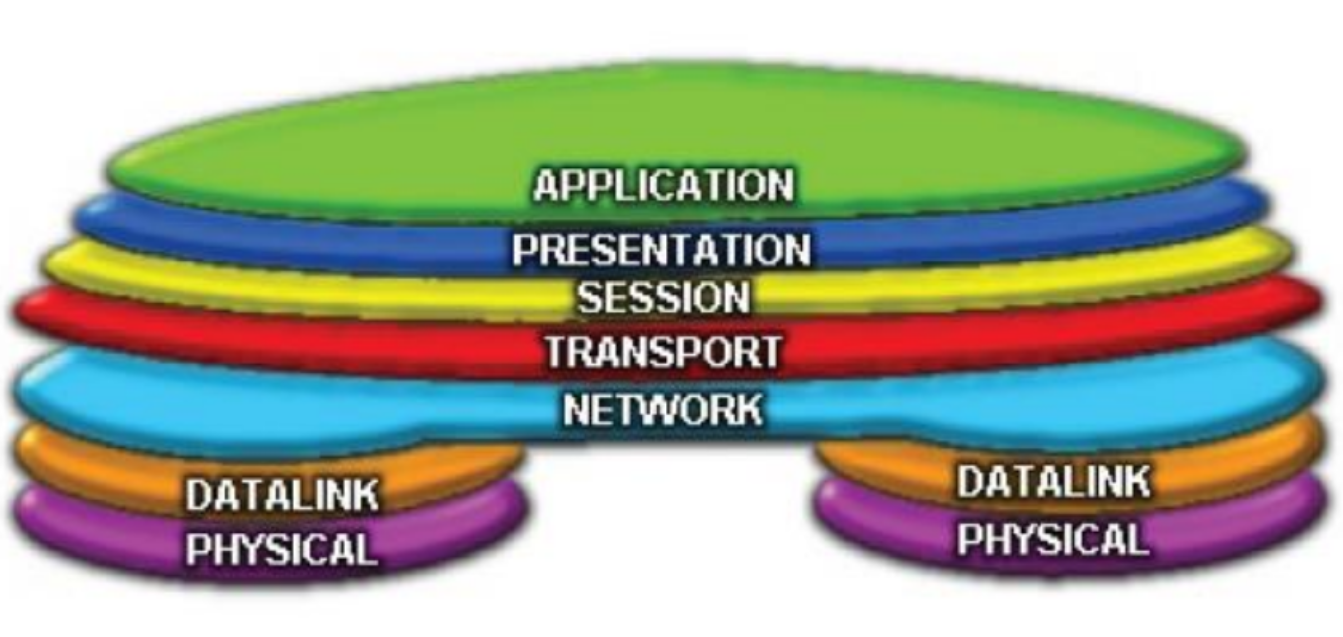
Client-server paradigm(典范)
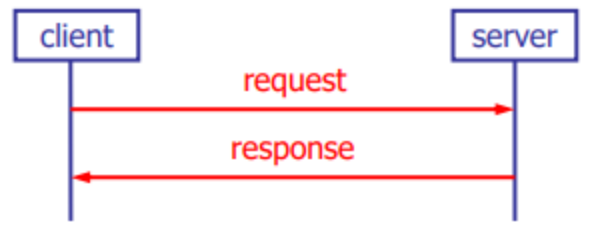
Client – the user of the service
Initiates interaction through requests
Server – the provider of the service
Must be listening
Waits and responds to the incoming requests

quiz

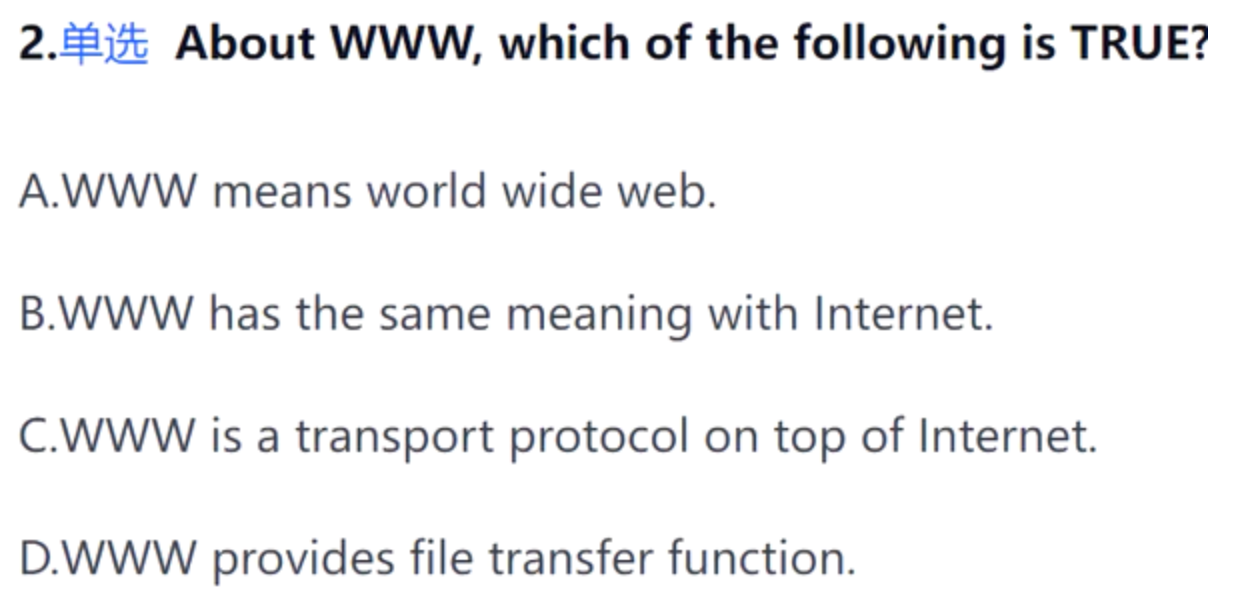


Basic Network Definitions
Terms for Network Devices
Node:a device that is connected as part of a network with a network address
E.g. Computer, PDA, Cell Phone, router, switch, bridge etc.
Host Node:the computer attached directly to the Internet
Link :the inter-connection between network devices
Network Component:the equipment that is part of the network infrastructure
Bandwidth:Indicates how much stuff you can send through a connection
Delay:is an expression of how much time it takes for a packet of data to get from one designated point to another
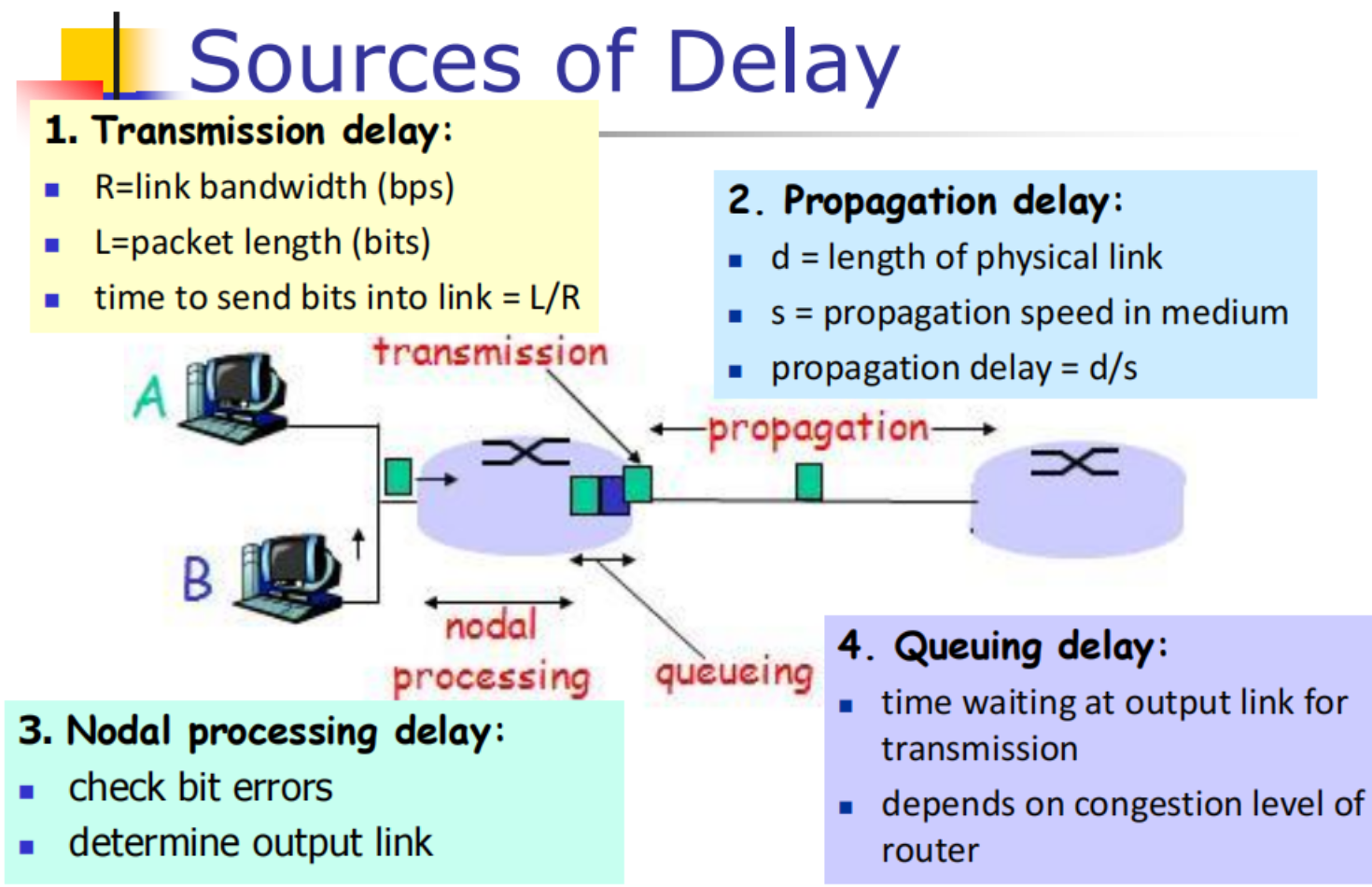
Jitter 晃动:The variation in delay
Error Rate:错误传输、丢失或重传输的数据单元的概率
◼ BER (Bit Error Rate)
◼ FER (Frame Error Rate)
◼ PER (Packet Error Rate)
Terms for Network Performance Parameters
Throughput : the average rate of successful message delivery over a communication channel
QoS (Quality of Service)
PLR (Packet Loss Rate)
Ways to connect to the Internet
Dialup拨号:Via twisted pair phone lines
MODEM (MOdulator-DEModulator,调制解调器)
ISDN:Integrated Services Digital Network (64-128Kbps)
ISDN(综合业务数字网)是传统电话服务的替换产品,提供从终端用户到终端用户的全数字服务,实现了语音、数据、图形、视频等综合业务的一个全数字化传递方式。
(A)DSL:(Asymmetric) Digital Subscriber Line 非对称数字用户环路
◼ 8 Mbps download, 2Mbps upload – 1M bps download, 256Kbps upload
Cable Modem
CATV: 500 Kbps - 30 Mbps
FTTH: Fiber to the Home
LAN
Ethernet connections
Satellite
Cellular(蜂窝)
Broadband wireless access(宽带无线接入)
Terms for network types
switching function in the network
Circuit switching network(面向连接):专用线路
Message switching network(报文交换):发送整体报文
Packet switching network(无连接):分成package
Hybrid switching network
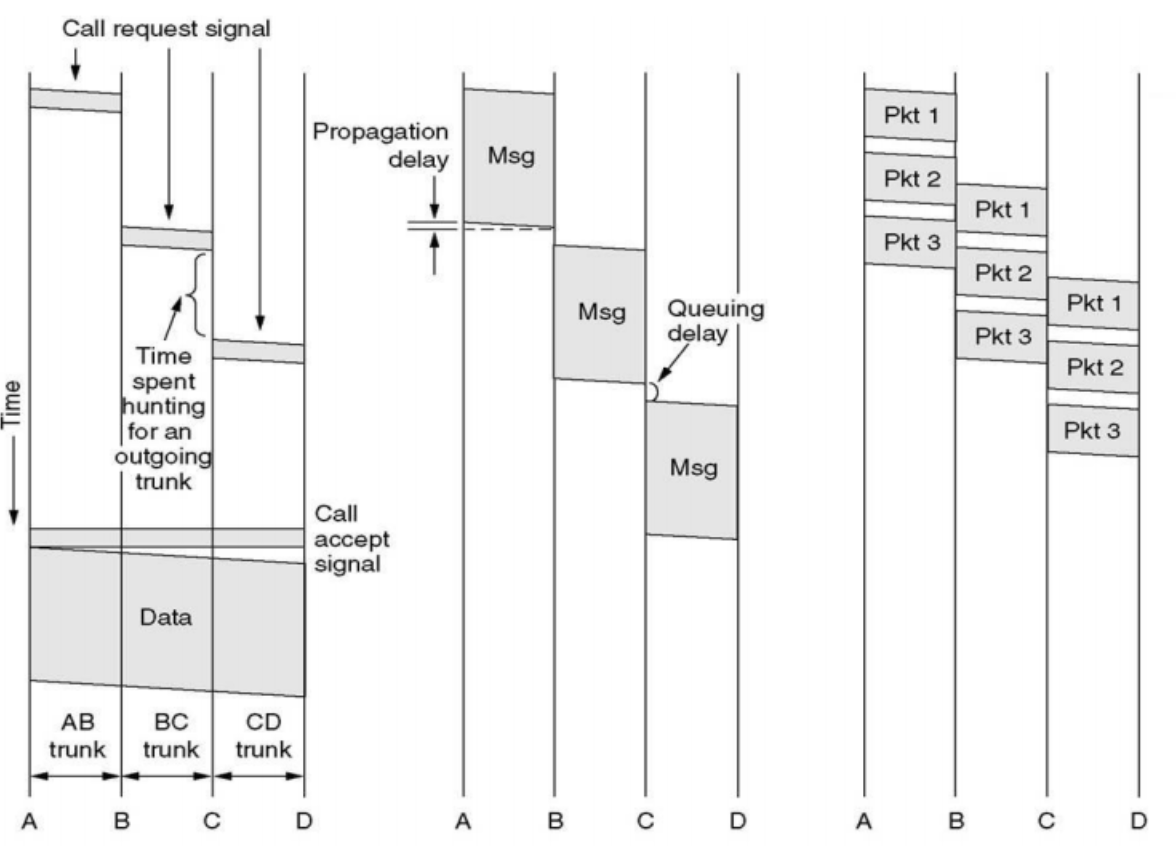
Different channel access technologies
Multi-access means shared medium
Many end-systems share the same physical communication resources
There must be some arbitration mechanism
Example: LANs
point-to-point
Between two points in the network, there must exists a physical channel
bandwidth waste
Example: WANs
range of the network
WAN (Wide Area Network,广域网) - network that spans a large geographic area
Range: 10 - 1000 km
Point-to-point ring or partial mesh
MAN (Metropolitan Area Network,城域网) - network that spans a medium area such as a campus to a city
Range: < 10 km
multi-access
Microwave, IEEE802.16/WiMAX
LAN (Local Area Network,局域网) - network that spans a limited area such as a lab, or a building
multi-access
Range: < 1 km
high speed
◼ Ethernet: IEEE 802.3, 10 M, 100M,
◼ Wireless LAN: IEEE802.11b/a/g/n/ac
PAN (Personal Area Network,个人区域网) – network that spans a small space such a room, less than 10m
According to the user of the network
Public network
The large scale network built by the telecommunication companies
Private network
The network built by a certain agency for its special requirements
Layered Architecture
OSI Layer Model
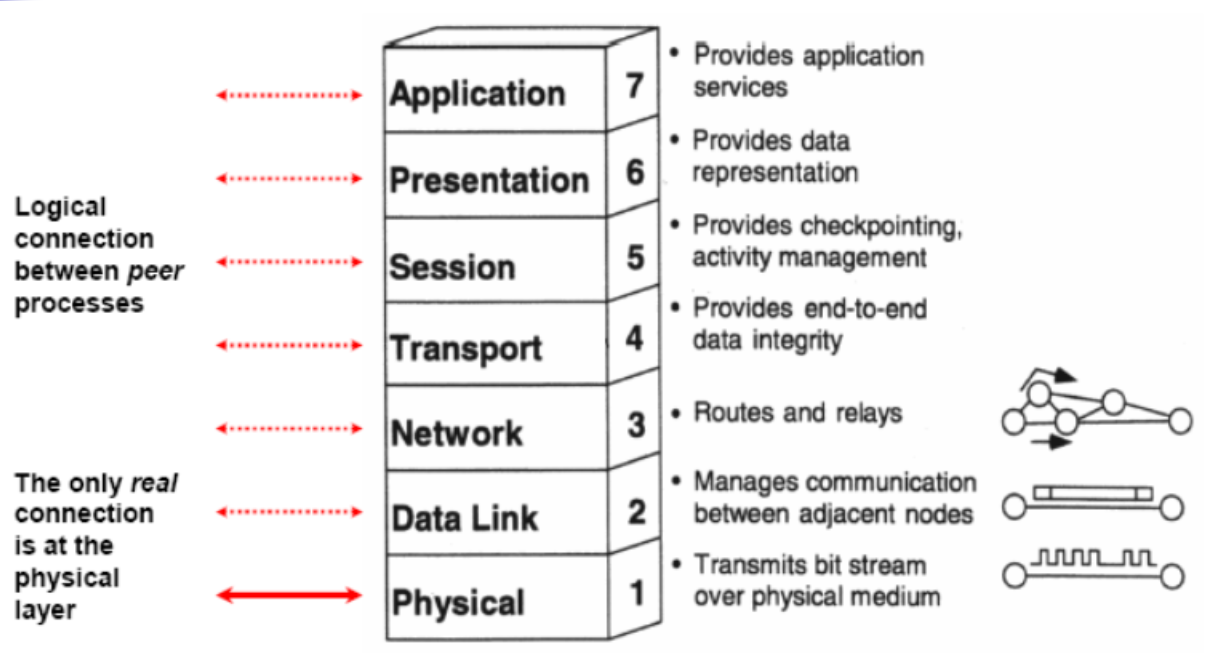
TCP/IP Layer Model
